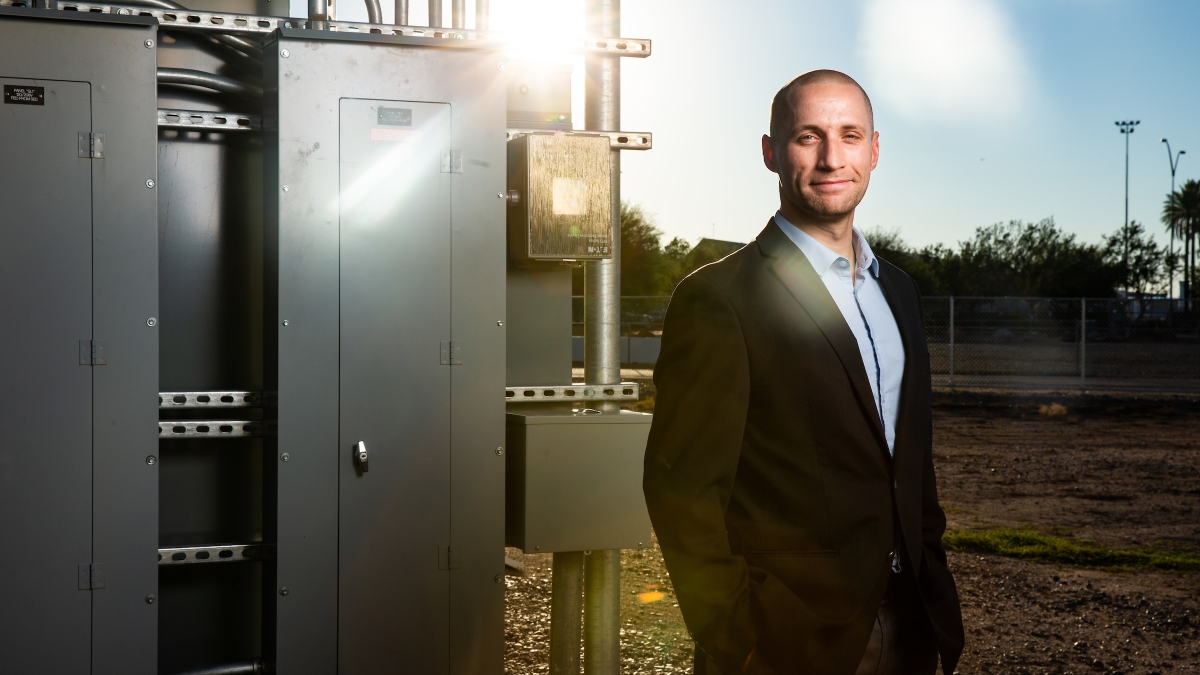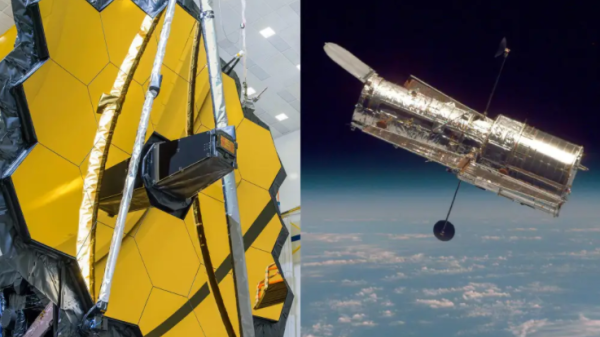Big power from a small container
With a $2 million grant from the Office of Naval Research, an ASU professor is working to improve on his solar-powered, electrical grid-in-a-box

Refugee camps. Disaster areas. Remote military outposts.
An Arizona State University engineering professor is working on improving microgrids for use in far-flung corners of the world where power doesn’t reach.
Microgrids are small isolated power systems, such as on oil rigs, in rural villages or at military expeditionary camps. Nathan Johnson created a solar-powered grid contained in a shipping container.
“Microgrids are often described as an on-grid system that can isolate,” said Johnson, an assistant professor in the Polytechnic School, part of the Ira A. Fulton Schools of Engineering. In summer 2018, Johnson received a $2 million, two-year grant from the Office of Naval Research.
“The Navy is often the first to respond in emergency situations around the world: natural disasters or conflict,” he said. “As a consequence, getting them more equipped with services and capabilities is going to improve the impact for humanitarian welfare. Secondly, the national defense strategy, as written by the Department of Defense, is looking for more of what they classify as dual-use technologies, where the research has a benefit to the defense sector but also to the private sector.”
He’s working on four projects within the study:
1. Reducing vulnerabilities in microgrids.
2. Improving cybersecurity.
3. Creating and testing controls for multiple microgrids.
4. Creating water and power solutions for rapidly deployable medical facilities for military expeditions, disaster response and humanitarian aid.
Half of the prototype of the medical facility is complete; the remainder will be finished in February. The unit will have a 10-kilowatt power system and a water treatment system capable of cleaning about 500 gallons an hour. The health care side is for primary care, with a triage area, blood testing capability, medicine distribution and outpatient services. The unit will provide healthcare, power and water to 12,000 South Sudanese refugees in northern Uganda.
“The focus of this work in a general form is doing additional research, but then focusing from the applied to commercialization,” Johnson said. “In all four areas we’re doing simulations and testing out at the Poly campus and then we have a physical one-acre grid modernization microgrid testbed where we’ll fabricate and test devices.”
At the end of the project, all four technologies will have a prototype which will be field-deployed and evaluated in the Grid Modernization and Microgrid Test Bed. “We have commercial partners to help facilitate that,” Johnson said.
By 2020, microgrids are expected to be a $40 billion industry worldwide. Part of the grant goes to technical training, with seven programs reaching 220 people in person and 410 people online. Approximately 50 percent of those trained will be veterans. Another 10,000 people will be reached in regular monthly podcasts on energy and cybersecurity. A total of 20 hours of online microgrid training will be provided free to the Navy in perpetuity.
It’s an opportunity to get into a burgeoning market.
“About 95 percent of the growth in global energy demand over the next 15 years is going to come from emerging markets,” Johnson said. “Training people to provide a high-quality skill set, intellectual engineering or design services that is broadly applicable to anywhere in the world also provides those individuals with a leg up for a type of market or a type of work with an international company that they may not have typically been exposed to in their standard university curriculum.”
Strategic advice will be gained from 12 project advisors including electric utilities, venture funds, strategy groups, technology providers, Naval and Department of Defense labs and government agencies.
Top photo: Assistant Professor Nathan Johnson poses for a portrait at the Polytechnic campus on Oct. 25, 2018. Johnson's work focuses on solar technology and how to innovate energy resources, smart networks and off-grid solutions in the Laboratory for Energy And Power Solutions (LEAPS) lab. Photo by Deanna Dent/ASU Now
More Science and technology

Celebrating 34 years of space discovery with NASA
This year, NASA's Hubble Space Telescope (HST) is celebrating its 34th anniversary of the world's first space-based optical telescope, which paved the scientific pathway for NASA's James Webb Space…

Making magic happen: Engineering and designing theme parks
The themed entertainment industry is widespread and diverse, encompassing everything from theme parks to aquariums, zoos, water parks, museums and more. The Theme Park Engineering and Design…

AI-equipped feeders allow ASU Online students to study bird behavior remotely
ASU Online students are participating in a research opportunity that's for the birds — literally. Online Bird Buddies is a project that allows students to observe birds remotely, using bird feeders…